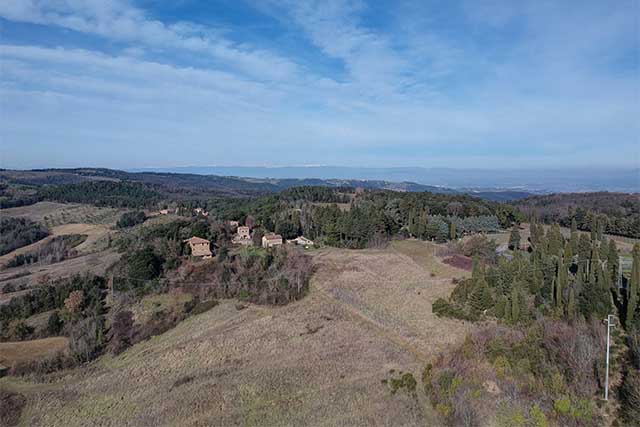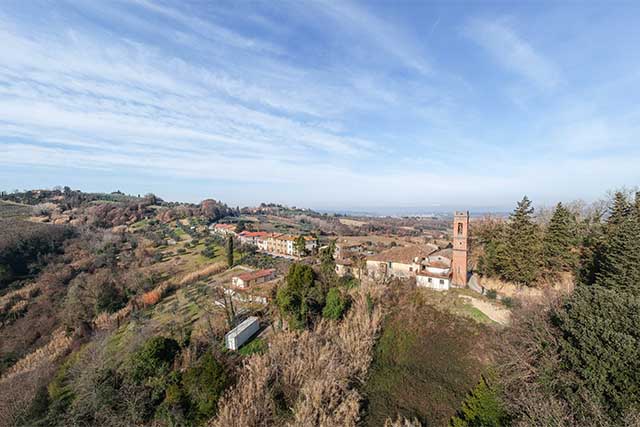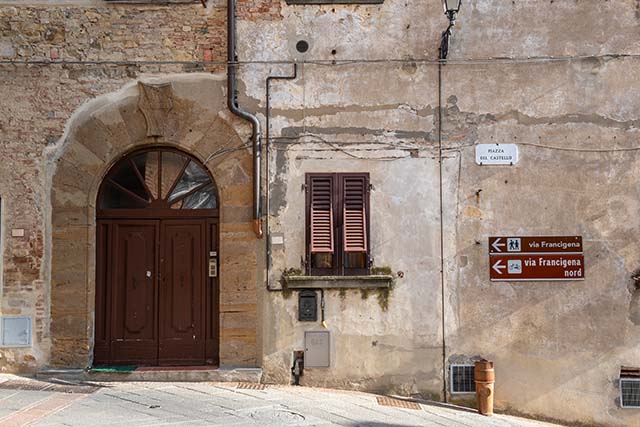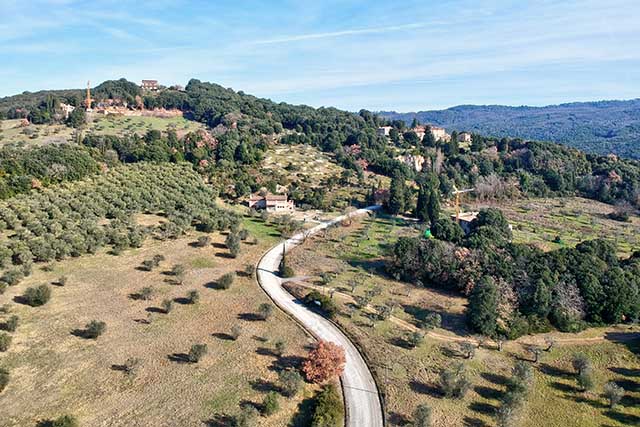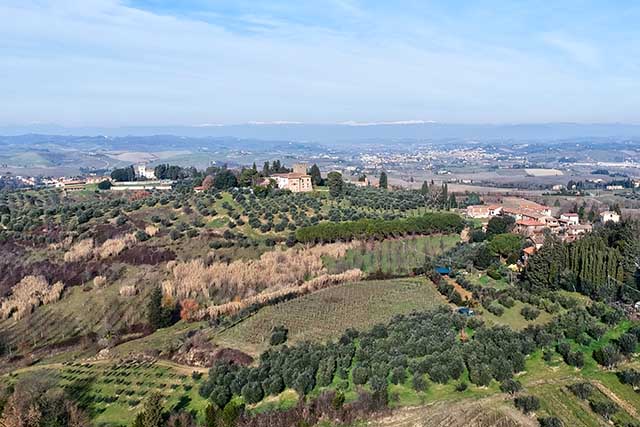Municipality of Gambassi Terme
Today Camporbiano is a small town located along the main road from San Gimignano to Certaldo, but during the central centuries of the Middle Ages, in this place stood one of the castles of the Cadolingi, the Counts of Fucecchio. Today there is no trace of that first castle; nevertheless Leonardo depicted Camporbiano in the form it still must have had during the Late Middle Ages. At that time, in fact, the ancient Cadolingian castle had probably become a fortress-shelter, used as a refuge for the rural population during periods of danger. The area, in fact, situated astride the important north-south route, was disputed by several forces on the field, including, mainly, the cities of San Gimignano and Volterra.
Catignano was originally one of the Valdelsan castles of the family of the counts of Fucecchio. Already, by the end of the 13th century, it had entered to become part of the Florentine countryside, but its position, along one of the routes of the Via Francigena, on the left of the Elsa, left it exposed to military raids. Its function as a shelter for the population of the sparse settlement during the Late Middle Ages must have ensured the maintenance of its fortified structures, if Leonardo, even in the 16th century, drew Catignano as a small castle equipped with defenses.
Gambassi has a long history. Originally it was one of the Valdelsan castles that belonged to the Cadolingi, the counts of Fucecchio, but the turreted castle drawn by Leonardo corresponds to a second settlement, the castrum novum of Gambassi founded by the bishop of Volterra at the end of the 12th century. The castle structure, which had an elongated oval shape, can still be easily recognized within the regular texture of the narrow streets of the historic center. When Leonardo depicted Gambassi as a fortified center, well equipped with curtain walls and towers, the castle must have perfectly maintained the features of the foundation of the castrum Bishop Ugo designed ex novo in front of the old castle of the Counts Cadolingi.
The village of Mommialla has been renovated now for some years, and today houses the facilities for the spa waters. In the mighty stone fortified houses of the village, we must recognize the physiognomy of the small fortified village Leonardo drew on one of his most famous maps. Actually the locality has very ancient origins: the early medieval village of Mommialla belonged to the bishop of Volterra. Of its oldest history, there remain traces in the tiny church of San Frediano, which is conserved as part of one of the local tourist complexes, a short distance from the village itself. The small church can be recognized by the cruciform loophole on the facade, a decorative element typical of the churches of the Valdelsa.
Varna today is a small cluster of houses along the ridge road on the left side of the Elsa. Its origins are very ancient: through this medieval village passed various important figures, such as the counts of Fucecchio, who stopped by here when they came to the Valdelsa, in their castles of Catignano and Gambassi. Varna was only a village, but during the Late Middle Ages, it must have taken on the typical features of a fortified country residence. It was in this form that Leonardo depicted Varna on one of his most well-known maps.





